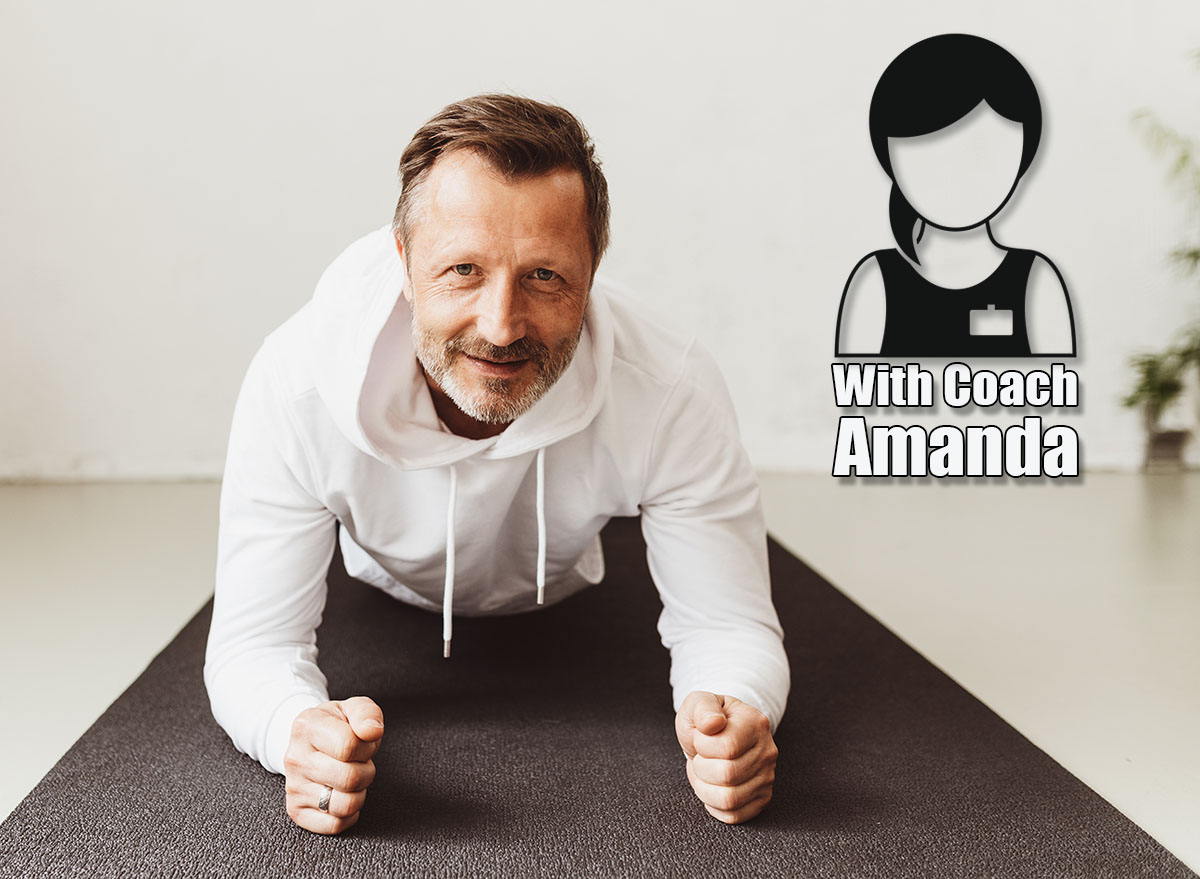If You Can Hold This Position for 90 Seconds After 45, Your Core Is Stronger Than 85% of Your Peers

Building a strong core isn’t just about sculpting six-pack abs that you can flaunt at the beach, it’s the foundation for nearly every movement your body makes. Your core helps stabilize your spine, improve posture, and prevent injury during workouts and daily activities. And after 45, maintaining core strength becomes even more essential. That’s because muscle mass naturally declines with age, which, according to research, suggests that the deep stabilizing core muscles holding your body upright (like your transverse abdominis and multifidus) are often among the first to weaken if they’re not trained consistently.
So, how do you go about putting your core strength to the test? Well, one of the simplest and most effective ways to measure your core endurance is the forearm plank. Amanda Dvorak, CPT, a certified personal trainer at Garage Gym Reviews, tells Eat This, Not That!, “If you can hold a forearm plank with good form with your hips level, glutes engaged, and spine neutral, it means your core endurance is above average for your age group. Holding for 90 seconds means you’ve built the strength and stability to support your spine and prevent injuries. It’s a simple test, but a strong signal of good foundational fitness.”
Read on to uncover the details of the plank test, plus four additional exercises that will help you build the strength and stability needed to keep your core in top shape for years to come. Then, when you’re done, check out If You Can Complete These 3 Tests After 40, Your Strength Is Decades Younger.
The Forearm Plank Test
This exercise is your benchmark for core strength after 45. If you can pass it with perfect form for 90 seconds, your core endurance is stronger than most of your peers.
How to do it:
- Lie face down on the floor. Place your forearms flat with elbows under your shoulders.
- Extend your legs behind you and press up onto your toes.
- Keep your hips level, glutes engaged, and spine neutral. Avoid sagging or piking your hips.
- Hold this position while breathing steadily.
Pass standard: Hold for 90 seconds with excellent form.
Tip: If your hips drop, your shoulders shrug, or your lower back starts to ache, stop and record your time.
Dead Bugs
Dead bugs are another stellar core exercise that trains your deep core stabilizers in a way that mimics the anti-extension work of the plank, but in a supine position, making it easier to focus on control. They also help improve coordination between your upper and lower body.
How to do it:
- Lie on your back with arms extended toward the ceiling and knees bent at 90 degrees.
- Slowly lower your right arm and left leg toward the floor while keeping your lower back pressed into the ground.
- Return to the starting position and repeat on the opposite side.
Sets & Reps: 3 sets of 8 to 10 reps per side. Rest for 30 to 60 seconds between sets.
Tip: Move slowly to maintain tension in your core throughout the movement.
Side Planks
Side planks target your obliques (side abs), which studies show are crucial for rotational stability and spinal support. Compared to the traditional plank, side planks also challenge your hips and shoulders in a different plane of motion.
How to do it:
- Lie on your side with your elbow under your shoulder and legs stacked.
- Lift your hips so your body forms a straight line.
- Hold the position while keeping your core tight and avoiding any sag in your hips.
Sets & Time: 3 sets, holding for 20 to 40 seconds per side. Rest for 30 to 60 seconds between sets.
Tip: If full side planks are too difficult, bend your knees and lift from that position.
Glute Bridges
Strong glutes support a solid plank hold by stabilizing your pelvis and reducing stress on your lower back. Additionally, glute bridges strengthen your posterior chain (backside) while reinforcing hip extension.
How to do it:
- Lie on your back with your knees bent and feet flat on the floor, roughly hip-width apart.
- Press through your heels to lift your hips toward the ceiling.
- Squeeze your glutes at the top, hold for one second, then lower slowly.
Sets & Reps: 3 sets of 12 to 15 reps. Rest for 30 to 60 seconds between sets.
Tip: Avoid arching your lower back and focus on glute engagement rather than how high you lift your hips.
Bird Dogs
Bird dogs train cross-body stability by engaging your core, lower back, and glutes while improving coordination. Research shows they’re also fantastic for building endurance in the muscles that protect the spine.
How to do it:
- Start on all fours with your wrists under your shoulders and knees under your hips.
- Extend your right arm forward and left leg back until both are parallel to the floor.
- Hold for one second, then return to the starting position and switch sides.
Sets & Reps: 3 sets of 8 to 10 reps per side. Rest for 30 to 60 seconds between sets.
Tip: Keep your hips square to the ground to avoid twisting through your torso.
Looking for more easy ways to lose fat? Here’s How Long Your Walking Workout Should Be To Shrink Belly Fat.